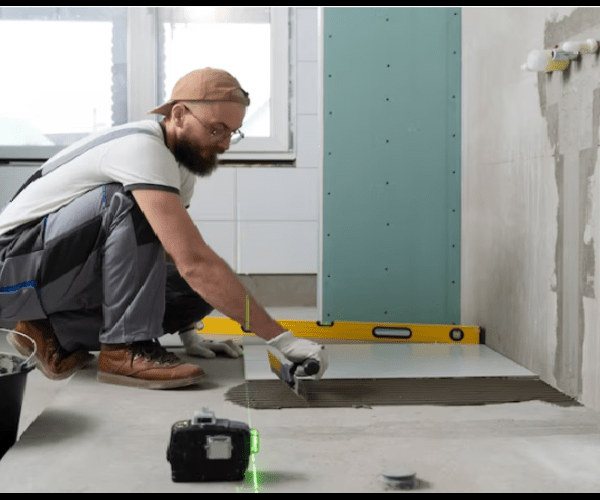
Why do we, often, turn off the switch when changing a bulb or why is it advised not to use electrical appliances near water? The simple answer is safety. Just like we follow these safety measures during our daily encounters with electricity, professional electricians need to adhere to their own set of safety protocols. After all, they are entrusted with setting up and maintaining the invisible, yet essential, veins of power running through our homes and workplaces, aren’t they? Their job includes risks that are far from trivial. This post delves into the multiple precautions an electrician should abide by. We hope this guide will act as a comprehensive backdrop for professionals in the field, reminding them of the importance of safety at work.
Electricians are constantly exposed to the risk of electric shock, burn injuries, and even fatalities. These hazards can be minimized, if not eliminated, by following proven safety procedures. Through practical advice and insights, we aim to inspire a culture of safety among electricians, leading to safer work environments and better professional practices.
From protective gear to comprehensive planning, from safe tool handling to ensuring fire safety, these measures work hand-in-hand to offer comprehensive protection to electricians. Read on for an in-depth view on how adopting these safety measures can significantly reduce the risk of accidents and injuries in the electrical profession.
The Role of Personal Protective Equipment
When dealing with electricity, one must always remember the maxim: prevention is better than cure. Safety gear, also known as Personal Protective Equipment (PPE), forms the first line of defense against electrical hazards.
From insulated gloves to safety glasses, helmets to flame-resistant clothes, each form of PPE serves a particular purpose. Insulated gloves, for instance, protect from electrical burns while safety glasses shield the eyes from sparking. The use of specific PPE depends largely on the nature and scale of the electrical work being undertaken.
Remember that PPE not only provides physical protection but also inspires a mindset of safety. As an electrician puts on his safety gear, he is consciously acknowledging the risky nature of his job and the preventive measures he must adhere to.
A Strong Emphasis on Planning and Risk Assessment
Electricity respects no one, so respect it instead. This starts with thorough planning and risk assessment before any electrical work is commenced. Careful evaluation of the electrical system, understanding the tasks to be performed, and identifying potential risks are all crucial.
Pre-job briefings or ‘toolbox talks’ are an effective way of communicating risk assessments and safety measures. Predefined safety procedures should be followed, always.
Successful risk assessment lies in identifying hidden threats. Careful evaluation of blueprints, study of previous maintenance reports and predicting likely problems, all contribute to a successful risk assessment and a safer work environment.

Electrician
Fire Safety Essentials
In the event of an electrical fire, knowing how to respond quickly and effectively can be a lifesaver.
Familiarity with the location and use of fire extinguishers, following proper maintenance of equipment to minimize fire risk, and adherence to local fire safety regulations are all important. Electricians should understand the different classes of fires and the appropriate type of fire extinguisher to use for each.
Always remember, if a fire is too large or unsafe to fight, evacuating the building and contacting authorities should be the immediate response.
Exploring the Importance of Proper Tool Handling
Tool safety is as crucial as wearing protective gear. Using the right tool at the right time, maintaining them properly and ensuring their safe storage contributes immensely to the overall safety of electricians.
Each tool comes with its operational limits and safety guidelines which need to be respected. Regular inspection, timely maintenance, and replacement of faulty tools are practices every electrician should adopt.
Electricians should remember, while a tool may help complete the job, if not used properly, it can also disrupt the work and cause harm.
Grounding: A Noteworthy Safety Measure
Grounding, though often overlooked, as a key safety measure in any electrical work environment. It minimizes the risk of electric shock by providing an alternative pathway for the electric current to follow in case of a fault.
In the event of a electrical failure, grounding can avert the potential threat of electric shock. Proper grounding, therefore, is non-negotiable for electricians.
Working with Certified Electrical Equipment
Working with uncertified or outdated equipment is akin to courting disaster. Equipment that meets certain safety standards and regulations protects the user and contributes to the efficiency of work.
Refraining from using substandard equipment, constantly reading updates about the equipment used, and respecting the operational instructions accompanying them should be part of the professional code for every electrician.
Conclusion
Safety in the electrical profession is non-negotiable. It involves a combination of personal protective gears, careful risk assessment, fire safety, tool safety, grounding and operating with certified electrical equipment. Implementing these safety measures will ensure a safer work environment for electricians.
As a precautionary approach, remember to respect the power of electricity. Risk-taking should never be part of your professional practice. After all, safety is not only about protecting yourself, but also about preserving the work site and ensuring the ongoing trust of your clients. Even a seemingly minor overlook could lead to drastic consequences. Therefore, staying up-to-date and making safety a primary concern should be the pillar of every electrician’s role.
By practicing these measures, we are not only saving lives but also ensuring the professionalism of the electrical trade. Stay safe, because your life depends on it.










